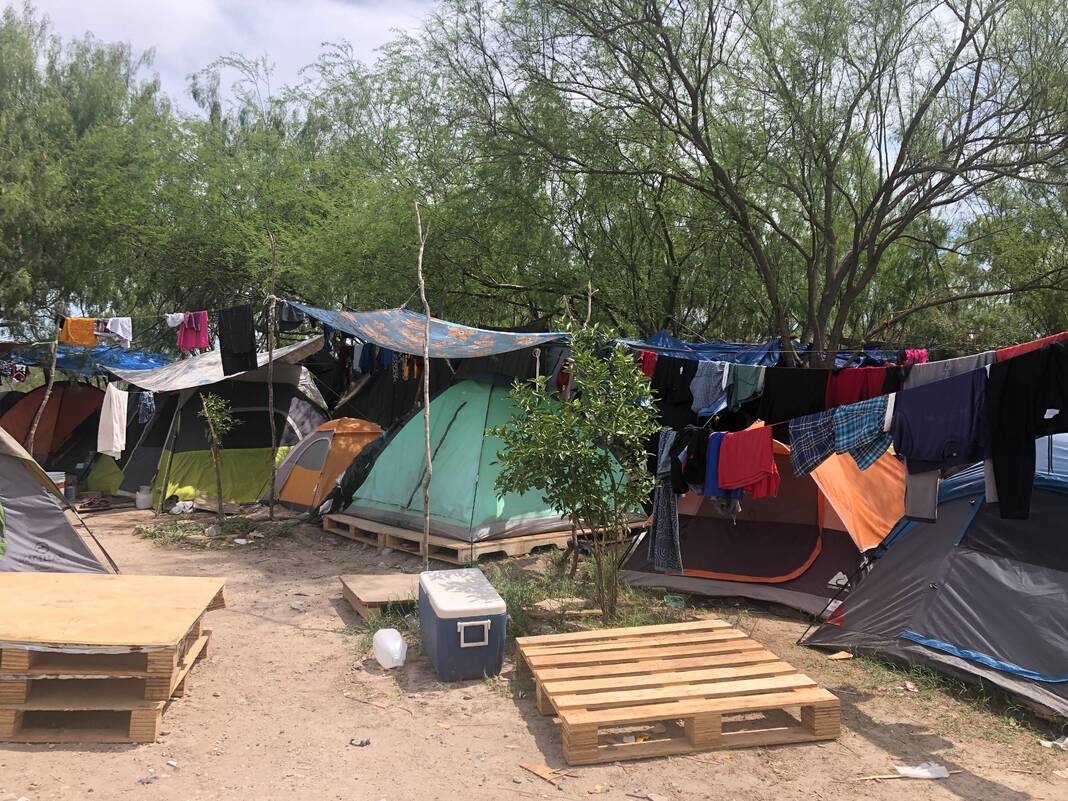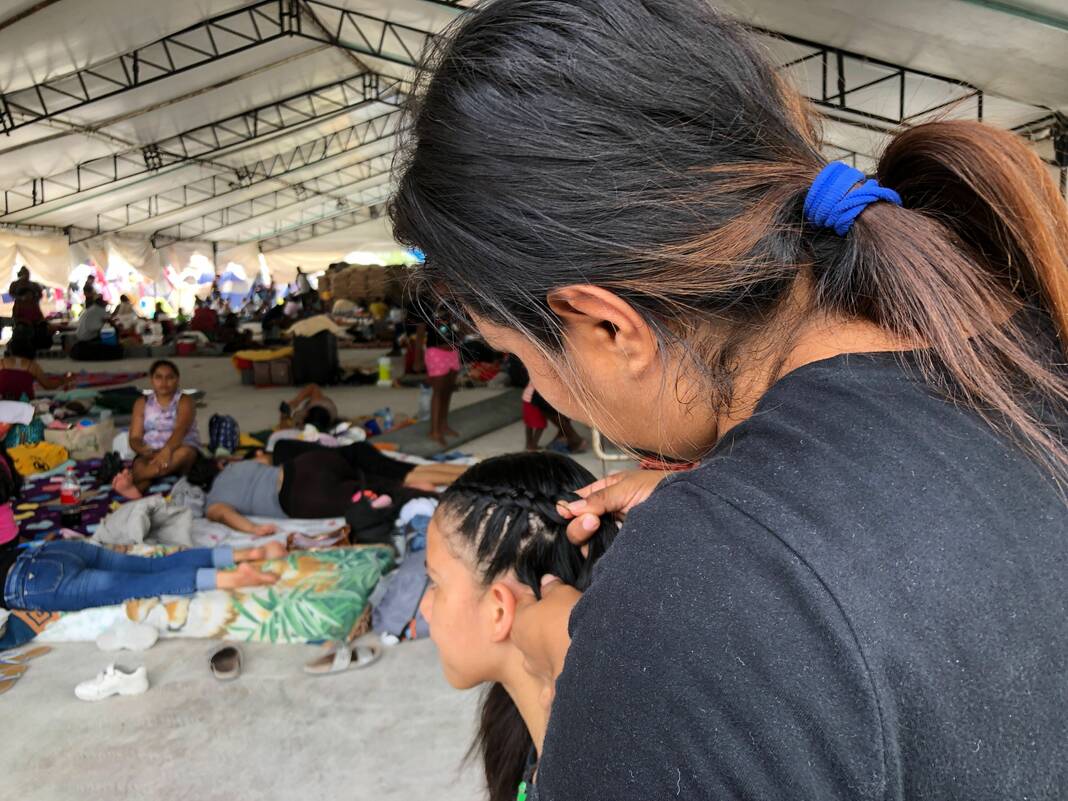Shelters providing refuge to migrants in Mexico waiting to seek asylum are feeling the financial strain from a COVID-era policy that has no clear end in sight.
“It hasn’t been easy,” Pastor Hector Silva, director of the two largest shelters in Reynosa, said Wednesday.
Silva oversees the operations at the largest shelter in Reynosa, Senda de Vida. They began expanding capacity after hundreds of migrants seeking asylum in the U.S. were turned back to Mexico under a public health policy known as Title 42.
Since the policy was implemented, it’s been leveraged about 3.2 million times to turn migrants back to Mexico. Attempts to end the policy by the end of May this year were stymied when the matter was taken up by the courts.
To keep up with the need prompted by the frozen policy leaving thousands stuck in border cities, nonprofit organizations decided to help fund the creation of a second site opened about four months ago, known as Senda de Vida 2.
Hundreds keep arriving as hundreds more stay to wait for a change in policy, stressing available shelter space.
“The majority is waiting outside of the shelters,” Silva said, “because we are housing 1,862 people in one place and 1,461 in the other.”
As silence on the end of Title 42 continues, the mood is shifting toward hopelessness.
“The desperation is caused by the U.S. government,” Felicia Rangel-Samponaro, a nonprofit director, said Tuesday.

Rangel-Samponaro is the director of Sidewalk School, an organization that originally began as an educational service for migrant children but has now evolved to provide other support and services.
In January, the Sidewalk School partnered with Kaleo Ministries to build a shelter. The first floor was opened in April but construction continues to this day to add much-needed space.
“There’s a lot of families living outside of the shelter,” Silva, who works closely with Sidewalk School, said. “We’ve been receiving a lot of families from a lot of different countries. It’s no longer just Latin America. It’s families from all over the world. Now we’re receiving families from Africa, Haiti, Ukraine, Russia and others.”
Many of them do not have financial resources to cover the cost of an apartment or house.
Hundreds of people, predominantly Haitian, are living on the streets of Reynosa crowding beside the two shelters operated by Senda de Vida. A smaller encampment recently developed and houses about two dozen families living in conditions similar to those seen in Matamoros during the Trump administration.
Rangel-Samponaro and Victor Cavazos, co-director of the Sidewalk School, often walk the streets of Reynosa seeking out the most vulnerable families to invite them to stay at a shelter.
The work is difficult to perform as the days spent by migrants waiting for entry into the U.S. stretch into weeks, months and years.
Last week, Rangel-Samponaro and Cavazos were picking up families who agreed to enter into shelters but the situation quickly became volatile.
“We had people jump into my car last Monday,” Rangel-Samponaro said. “I didn’t lock the door and all of a sudden people were in my car.”
Another time when they were transporting families into shelters, a crowd quickly gathered.
“By the third or fourth time we went to pick up another family, word had gotten out Victor and I were moving families from outside into the shelter and a group of men started running toward the car,” Rangel-Samponaro recalled.
The effect is seen everywhere the two go. As soon as they are recognized, arms holding cell phones encircle the pair seeking to exchange numbers and information about their cases.

Many know that although the pandemic-induced policy remains in place, exceptions are made every day. Rangel-Samponaro estimated about 60 people on average are called daily to the port of entry by U.S. Customs and Border Protection to be processed legally into the United States.
The process can take long and many will not be considered. However slim their chances, many decide to stay put, but organizations providing housing, food, medical assistance and basic necessities are feeling the strain of the long wait.
“Mainly, it’s the food,” Silva said. “Then it’s the medicine that we need.”
With winter on its way, Silva worries about sickness spreading among the most vulnerable, like children and those with medical conditions.
The International Organization for Migration, or IOM, is offering assistance to Senda de Vida, but that’s only temporary. Donations and grants from the Sidewalk School underpin several efforts across multiple shelters in the area.
That’s been threatened by a lack of awareness among the U.S. population who donated to nonprofit organizations helping with the more visible need at the Matamoros encampment in 2019.
“We don’t have money to go past December of this year, not for everything that we support,” Rangel-Samponaro said.
A grant writer continues seeking out opportunities, but for now Rangel-Samponaro is focusing on the need that exists before her.
“All of this has to keep going,” she said, “because so many people and shelters depend on you to keep going.”
Silva and Rangel-Samponaro have asked the Biden administration for a prediction on when the practice of turning back migrants seeking asylum will end.
“At this time they haven’t told us anything,” Silva said.




